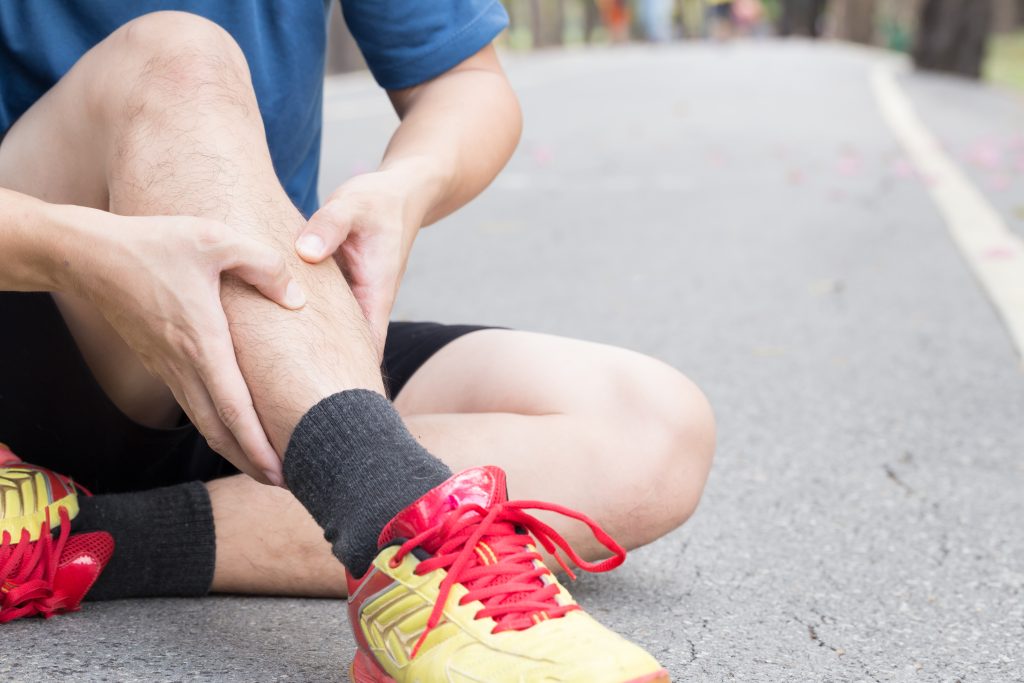Shin splints can be a frustrating and persistent obstacle for anyone who wants to be on their feet. Whether you’re a runner, a fitness guru, or just someone trying to stay active, shin splints can put a serious dent in your routine. The good news? With the right care and guidance, you can find relief and work toward preventing shin splints in the future.
But shin splints have complex causes and therefore sometimes require nuanced solutions. Shin splint stretches might be able to help, but first we need to understand the whole picture of what’s causing the pain.
What are shin splints?
Shin splints are not a medical diagnosis. It’s a term people commonly use to describe pain located at the front of their lower legs. In some cases, it can be diagnosed as medial tibial stress syndrome, which occurs when excess strain is placed on the connective tissue that attaches muscles to your shin bone (tibia). This condition often results in inflammation and pain along the inner edge of your shin bone.
Common causes of shin splints
Shin splints typically develop due to overuse, improper movement, or excessive strain, especially during high-impact activities. These include:
- Running or jogging, particularly on hard surfaces
- Suddenly increasing workout intensity or duration
- Wearing unsupportive or worn-out footwear
- Poor technique during physical activity
- Muscle imbalances or weakness in the calves or ankles
While shin splints are common in runners, they also affect people who are active with hobbies like dancing, hiking, and other activities.
Treating shin splints
Unfortunately, there’s no instant cure for shin splints. Recovery time largely depends on the severity of the condition. A helpful rule of thumb to follow to prevent shin splints from getting worse or coming back quickly is to avoid resuming your normal activity level until you have been pain-free for a week or longer.
However, targeted treatment can significantly improve your symptoms and speed up the healing process. One effective at-home method is the RICE protocol.
RICE
The RICE method is a tried-and-tested approach for managing pain and inflammation caused by shin splints. Here’s how it works:
- Rest: Avoid activities that trigger pain or put stress on your shins. Allow your body ample time to heal.
- Ice: Apply an ice pack to your shins for 15–20 minutes, several times a day, to reduce inflammation and numb pain receptors in the area.
- Compression: Use a compression bandage to reduce swelling and promote blood flow.
- Elevation: Keep your legs elevated above your heart when resting and sleeping (if possible) to minimize swelling.
Shin splint stretches
Stretching plays a critical role in easing the pain associated with shin splints. By improving flexibility and strengthening supporting muscles, you can reduce the strain on your shins and speed up recovery.
- Standing calf stretch
- Stand facing a wall, placing both hands on the wall at shoulder height.
- Step back with one leg, keeping it straight and pressing your heel into the ground.
- Seated toe stretch
- Sit on the floor with your legs extended.
- Point your toes forward as far as possible, then pull them back toward your body.
- Shin stretch against the wall
- Sit with your knees bent and feet flat on the floor.
- Slowly point your toes under and curl them, stretching the front of your shins.
- Heel-toe walks
- Walk across the room by raising one foot at a time, rolling from heel to toe.
- Focus on controlled, deliberate movements.
While these stretches can be helpful, be careful not to overdo it, as pushing too hard can aggravate your injury.
Physical therapy
If you repeatedly experience shin splints but want to keep your activity level the same, it might be time to talk to a physical therapist. Repeated bouts of shin splints could also indicate underlying issues such as poor biomechanics or muscle imbalances. A physical therapist can address these concerns to help prevent future injuries.
At Back in Motion, our PTs can personalize a treatment plan to not only get relief from your symptoms but also help you prevent shin splints from returning.
We may also be able to recommend additional solutions such as custom orthotics for people who have struggled to find the right running shoes for conditions like flat feet or even leg length discrepancy.
How to prevent shin splints in the future
Although shin splints can’t always be avoided, there are steps you can take to reduce your risk of developing them again once you’ve healed:
- Use dynamic warm-ups: Start every workout with movements like heel walks and toe walks. These dynamic warm-ups help prepare your shins and ankles for activity.
- Strengthen supporting muscles: Regularly perform exercises targeting your calves, ankles, and feet to support your overall biomechanics.
- Invest in proper footwear: Make sure your shoes provide adequate support and cushioning for your chosen activity. Replace them as soon as they show signs of wear.
- Avoid overtraining: Avoid sudden increases in workout intensity or duration. Incorporate rest and recovery days into your routine.
- Cross-train: Mix high-impact activities with low-impact options like swimming or cycling to give your shins a break.
By building a strong foundation of flexibility, strength, and proper form, you can minimize the chances of shin pain interfering with your active lifestyle.
Personalized advice from a physical therapist
Shin splints shouldn’t sideline you from your normal routine on a regular basis. With the right warm-ups, recovery techniques, and preventive measures, you can alleviate pain and keep moving forward. And even when you struggle to find relief on your own, expert guidance can make all the difference.
At Back in Motion Physical Therapy, we’re here to help you get back on your feet quickly and sustainably. Start a conversation about your concerns and symptoms by calling one of our clinics throughout Maine or by requesting an appointment online today.

